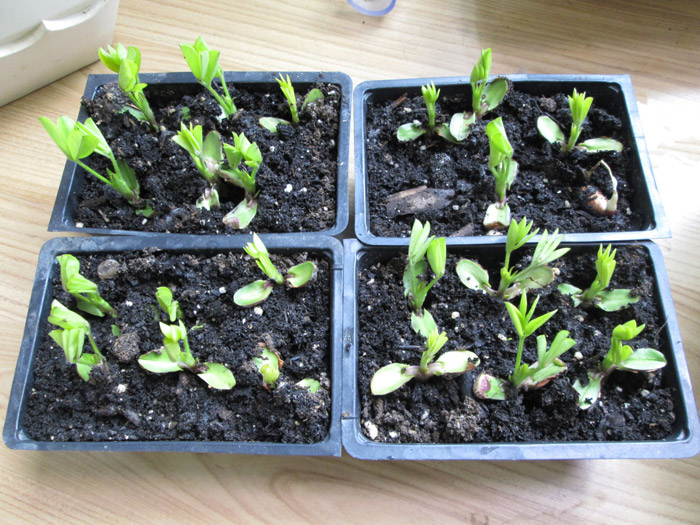Whether you’re new to gardening or a seasoned grower, have a large plot or a few containers, early planning is key to improving the success and productivity of your garden space. “Thinking green” in January and February is a great way to beat back the winter blues while ensuring you don’t miss any planting deadlines. It’s also a good time to organize your seeds and create a wish list for local seed swaps. Here are a few things to consider as you dream about your garden.
Plant spacing
It’s important to be realistic about the amount of space you have, but even containers can be surprisingly productive if you have a good plan. The block method of growing, commonly referred to as “square foot gardening” involves growing plants in beds, rather than in conventional rows. Not only does this approach maximize space usage, it reduces weed problems – less bare ground means more competition for weeds as the crops mature.
Know how much space each type of plant requires. For example, one square foot (30 cm x 30 cm) can fit 1 cabbage, 2 corn, 4 garlic, 8 pea, 9 beet, or 16 carrot plants. Sprawling plants, like cucumbers, will require a larger area, but using vertical space will save ground space for other crops. Trellises can be quick and dirty, such as a simple hog panel, or an elaborate work of art. This is the time to brainstorm ideas and rummage through the shed for useful materials.
Companion planting
Planting certain crops together, or in close proximity, not only makes the most of any garden plot, it can provide benefits in the form of weed or pest control. In a previous article, Debra Henry introduced the “three sisters garden” where corn, beans and squash are planted together because each provides support or protection for the others. I’ve found that sweet potatoes pair well with peppers. The creeping ground cover helps to retain soil moisture and reduce weed growth,
and the harvesting periods are complementary – by the time the sweet potatoes are ready, the peppers have all been picked.
Crops that are prone to insect damage, such as cabbage and broccoli, can greatly benefit when herbs that are highly attractive to pollinators grow nearby. Paper wasps, yellow jackets and tachinid flies work wonders on cabbage worms, either carrying them back to the nest to feed their young, or parasitizing them. Birds that eat cabbage butterflies can be encouraged by ensuring there is something nearby for them to perch on.
Starting plants indoors
As the days start to get longer and the itch to start planting grows, it may take everything you have to resist this urge. Starting plants indoors gives them an often necessary head start on our short growing season. Started too early, however, they will outgrow their pots, resulting in the need to transplant them into larger containers – and a house overrun with bedding plants. Check your seed packets and follow the suggested time for planting, keeping your average last frost date in mind. For Altona north to Morris, it’s May 11 – 20 and for the rest of our area, it’s May 21 – 31.
If you simply can’t wait to get your hands in the dirt, there are a few crops that are best started in February. Onions grown from seed and sweet potatoes, ginger and turmeric grown from sprouted tubers/roots will only reach a healthy size if started extra early.
Lighting is an important consideration when starting plants indoors. Inadequate or distant lighting forces plants to stretch toward whatever light source there is, resulting in weak and spindly plants. This can be prevented with grow lights. The shape and size of the lights will depend on your space, but be sure to get bulbs with a light temperature of 5000 – 7000 Kelvin. Higher light temperatures (in the blue light range) promote foliar growth while lower light temperatures (in the red range, or around 3000K) are better for flowering and fruiting.
With early planning, you can ensure you have all the things you need for a successful garden. May all your dreams come true.




